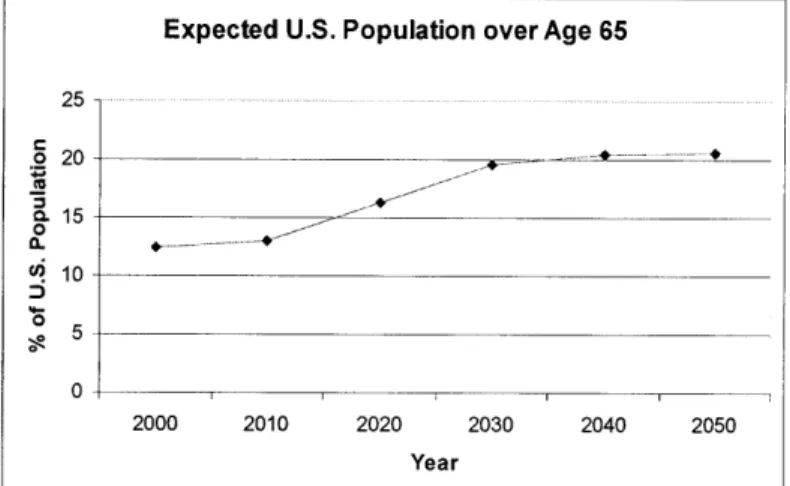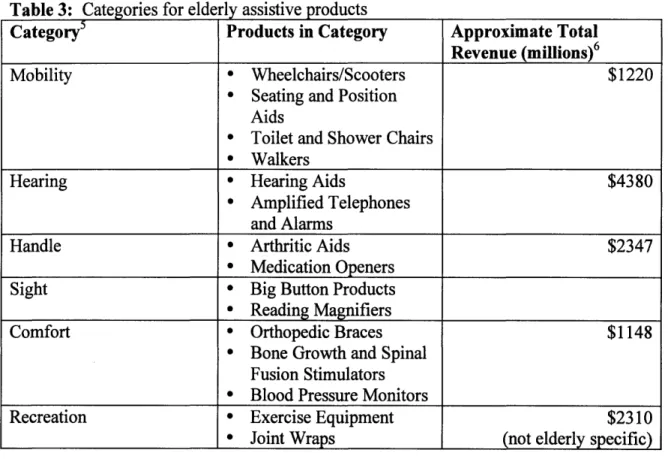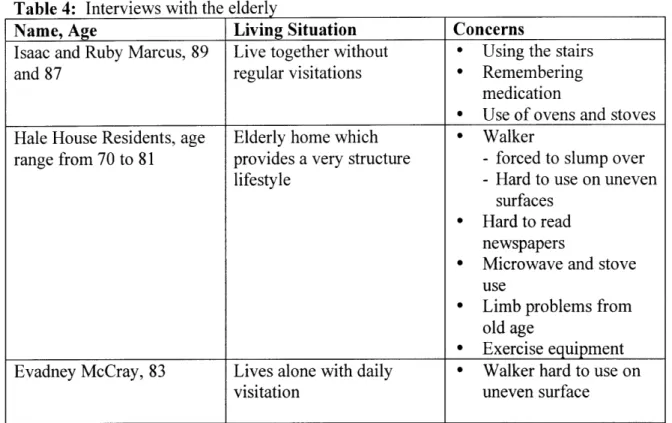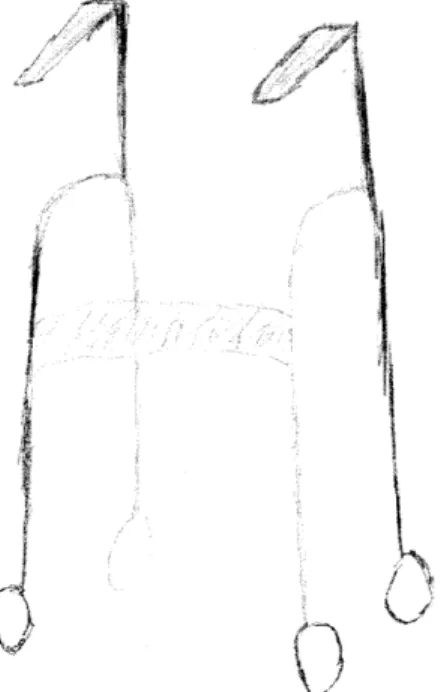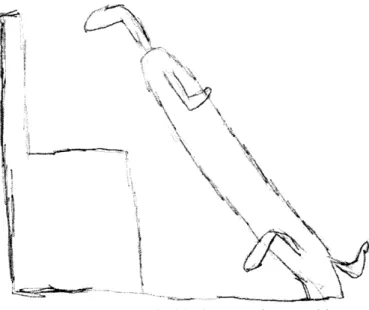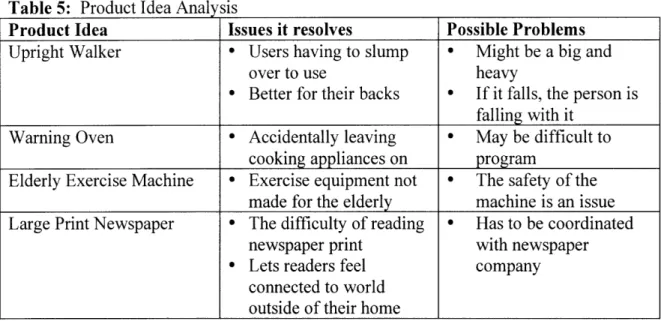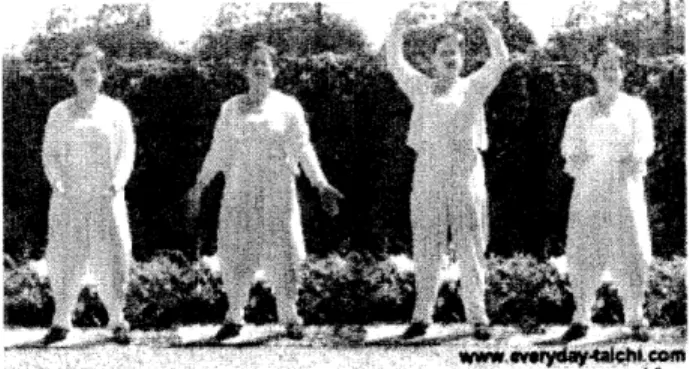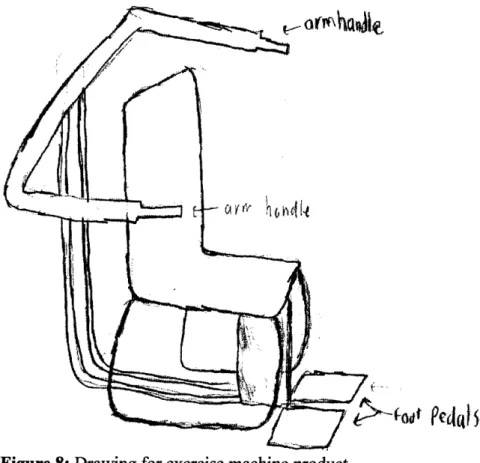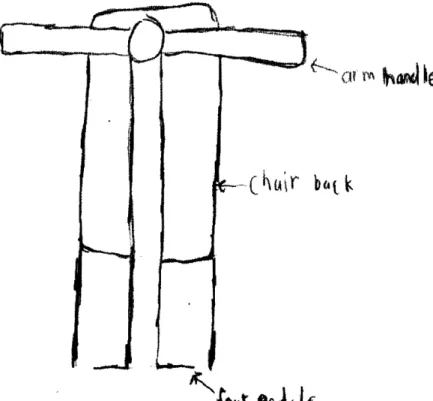Development of an Exercise Machine for the Elderly
byMarcus R. Carson
SUBMITTED TO THE DEPARTMENT OF MECHANICAL ENGINEERING IN PARTIAL FULFILLMENT OF THE REQUIREMENTS FOR THE DEGREE OF
BACHELOR OF SCIENCE AT THE
MASSACHUSETTS INSTITUTE OF TECHNOLOGY JUNE 2007
©2007 Marcus R. Carson. All rights reserved. The author hereby grants to MIT permission to reproduce
and to distribute publicly paper and electronic copies of this thesis document in whole or in part
in any medium now known or hereafter created.
Signature of Author: ,
ee''
Certified by:
Departmet of Mechanical Engineering
/
5/11/07 I- -Accepted by: SDavid C. Gossard of Mechanical Engineering Thesis SupervisorC
John H. Lienhard V Professor of Mechanical Engineering Chairman, Undergraduate Thesis CommitteeMASSACHUSETTS INSTMRTE!
OF TECHNOLOGY
JUN 2%
12007
LIBRARIES
Development of an Exercise Machine for the Elderly
byMarcus R. Carson
Submitted to the Department of Mechanical Engineering on May 11, 2007 in partial fulfillment of the requirements for the Degree of Bachelor of Science in
Mechanical Engineering
Abstract
The purpose of this project was to develop an idea for a product that would help the elderly in their daily lives. The specific people that the product would target were those senior citizens who are still self-sufficient but are feeling the early stages of old age. This was an important project because such a product would have the potential to be beneficial for the elderly as well as marketable and profitable. There were many stages involved in coming up with an idea for a product. First, market research needed to be conducted in order to determine information about the target group. The research helped determine the size of the target group along with their lifestyles and opinions. Research was also done to analyze products that are currently on the market. After analysis of all the information,
an exercise machine for the elderly was developed as an idea for the product. This exercise machine would be one that allowed the users to do moves similar to Tai Chi exercises. This would help the elderly with their range of motion, flexibility, and lower body strength. The product developed has a lot of potential for further research and progress.
Thesis Supervisor: David C. Gossard Title: Professor of Mechanical Engineering
Table of Contents
Introduction ... 4
Methods ... 4
Product Development ... ... 14
Conclusion...18
Introduction
The objective of this project was to develop an original product that could assist the elderly in their everyday lives. Developing an original product is not an easy task.
Careful steps need to be taken to ensure that such a product will be beneficial to the target customers and competitive in its market.
The specific people being targeted are senior citizens who are able to live on their own if they want, but still feel the obvious effects of aging. Some of these senior citizens live by themselves and have someone occasionally check in on them. Others live in senior citizens homes or communities in which their daily activities are structured yet they are still able to think and act for themselves. The reason why this group is compelling is because they are in the early stage of their physical decline. They are unable to walk as quickly, see as clearly, or be as active as they used to be. However, their minds are still sharp and they can still think for themselves. Also many of them may be reluctant to ask for or accept help. So any product that can make their lives easier and give them a greater sense of independence would be greatly appreciated and hopefully profitable as well.
In order to develop this product, I needed to determine an appropriate. Research had to be done to identify an idea as well as to find an appropriate scope for the product. This was done by researching statistics on the size of the potential market. Also interviews with potential customers were done in order to help focus research on a particular type of product to be created.
Methods
There are a number of steps that need to be taken before a product idea can be developed. These steps ensure that a product has potential to be marketable and successful.
Market Research
The first step in the research was to find information on the size of the market for the elderly as existing well as products for the elderly. Initially three questions needed to be answered:
1) What is the size of the market?
2) What competitive products are already out there?
3) What do potential customers feel about products that are already out there or
not out there?
Market Size
Estimates of the current and future size of the elderly population in the United States are shown below.
Table 1: Elderly Population Statistics in 2000'
US Population over age 65 years 33.3 million
With a disability 14.0 million
With a sensory disability 4.7 million With a physical disability 9.5 million With a mental disability 3.6 million With a self-care disability 3.2 million With a go-outside-home disability 6.8 million
Figure 1: Expected Elderly Population through 20502
Expected U.S. Population over Age 65
25 . 20 . . . a. 15 0 0 2000 2010 2020 2030 2040 2050 Year
Figure 2: Expected percentage of U.S. population through 20503
1 Administration of Aging, Census 2000, www.aoa.gov
2 www.agingstats.com
3 www.agingstats.com
Expected U.S. Population over Age 65
--
-2000 2010 2020 2030 2040 2050
Table 2: Living Arrangements of population age 65 and older4
Living Arrangements Men Women
With Spouse 71% 41%
With Other Relatives 7% 17%
In Assisted Living Homes 3% 2%
Alone 19% 40%
The statistics in these figures and tables provide the background of information for my research. The important statistic that can be seen in Table 1 is that there were over 33 million senior citizens in America in 2000. About 40% of them have some kind of
disability. This means that well over half of the elderly are only experiencing a slight decline in their physical skills. This is the group that being targeted for the potential product. Figures 1 and 2 show some interesting information as well. It shows that the number of senior citizens is growing and will continue to for many decades. From the years 2000 to 2010, the senior citizen population will grow about 15% and by 2050 the population will have grown by almost 150%. This shows that the elderly is a market that is large and growing.
Competitive Products
Another important question is whether there are competitive products that are already out on the market. This is done for two reasons: to find out how successful each of these products are doing in the market and identify products yet to be created. Upon doing this research, many items were discovered to be on the market, yet many ideas were also sparked.
Products to assist the elderly can be separated into six categories: mobility, hearing, handle, sight, comfort, recreation. Detailed information on these categories and their products are as follows:
Table 3: Categories for elderly assistive products
Category Products in Category Approximate Total
Revenue (millions)6
Mobility * Wheelchairs/Scooters $1220
* Seating and Position Aids
* Toilet and Shower Chairs
*
WalkersHearing * Hearing Aids $4380
* Amplified Telephones and Alarms
Handle * Arthritic Aids $2347
*
Medication Openers Sight * Big Button Products*
Reading MagnifiersComfort * Orthopedic Braces $1148
* Bone Growth and Spinal Fusion Stimulators
*
Blood Pressure MonitorsRecreation * Exercise Equipment $2310
* Joint Wraps (not elderly specific) There are many more products than just the ones listed in the second column of Table 3. However, this table gives a sense of the major products that are on the market and which ones are most profitable. As seen in the third column, all of these categories combined generate over $1 billion in revenue. This supports the assertion that products to assist the elderly are a strong market. While hearing aids seems to contribute to the greatest
revenue, none of the categories stand out as being greatly more profitable than others. This means that a focusing on a more specific category must be done through other measures.
Customer Opinion
The last step in this process was talking directly to potential customers. This was the most important and possibly most beneficial step in this process. They were able to give their opinions on the kind of product that they might be interested. Also, this gave me a chance to observe their lifestyle. I am not around any senior citizens much, so talking to them and observing how they live provided an opportunity to observe their daily
lifestyles. Listening to their opinions allowed me to identify a more focused scope for which to develop a product.
The first potential customers interviewed were Mr. and Mrs. Isaac and Ruby Marcus. Isaac and Ruby are 89 and 87 years old, respectively, and reside in Gary, IN in a two story townhouse. They have children and grandchildren who live nearby and visit on a
5 www.seniorshops.com
regular basis. However for the most part, they are capable of living on their own without very much assistance. In the interview, Isaac and Ruby expressed three concerns that they have had in their elder years.
Their first concern was going up and down the stairs. Although they were still able to use the stairs, it had become very difficult for their bodies in their old age. So, now they go to the second floor of their home very seldom. Years ago, they even had to move their bedroom downstairs in order to decrease the amount of times they go to the second floor. The other issues they talked about stemmed from a slight loss in their memory.
Sometimes they would forget to take their medicine. Nothing severe has happened as a result, but there is the potential that this poor memory could become a serious problem. The last problem they had was using their oven and stove. In fact, they had been told by their children that they should not use those appliances without someone else present in the house. This is to prevent them from leaving the oven on and forgetting about it, thus causing severe damage to their home. This was more of a concern for Ruby because she loved to cook and bake, but now she is unable to.
The second group of people that were interviewed was residents of Hale House Senior Citizens Center. This is an assisted living home in which residents are given plenty of independence in their daily lives while their meals and outdoor activities are planned for them. In essence, they live a very sheltered life while given a sense of independence. The group of residents being interviewed was very diverse and they all were in different situations. However, they were able to agree on a few problems that they would like to get resolved. Many of the residents had complaints about their walkers. Some said that they had to slump over when they used them which was bad for their backs. Others also
said that they had trouble using their walkers while walking on uneven ground. Some mentioned that they now have trouble reading a newspaper which they used their connection to the world outside of Hale House. A topic that came up was the use of microwaves and stoves. The home had discontinued all use of those appliances by the residents for the same reason as Mr. and Mrs. Marcus above. Other topics that came up were limb problems due to old age and the want for better exercise equipment.
The last person interviewed in this process was Evadney McCray. Ms. McCray is 83 years old and lives alone in Baltimore, MD. She has glaucoma as well as a severe case of arthritis, which forces her to use a cane wherever she goes. While she lives alone, she has someone check in on her everyday to bathe her and prepare her food. The only issue that she brought up about her life was her walker. Just as the residents in Hale House, Ms. McCrayhas troubles walking on uneven surfaces with her walker. She especially pointed out the fact that there are many cracks in the sidewalks of Baltimore and those can cause her numerous problems.
Table 4: Interviews with the elderly
Name, Age Living Situation Concerns
Isaac and Ruby Marcus, 89 Live together without * Using the stairs and 87 regular visitations * Remembering
medication
* Use of ovens and stoves Hale House Residents, age Elderly home which * Walker
range from 70 to 81 provides a very structure - forced to slump over lifestyle - Hard to use on uneven
surfaces * Hard to read
newspapers
* Microwave and stove use
* Limb problems from old age
* Exercise equipment Evadney McCray, 83 Lives alone with daily * Walker hard to use on
visitation uneven surface
These interviews provide a lot of information the next step of the process. A few trends that can be seen are issues with cooking appliances (microwaves, stoves, and ovens) and the use of walkers. Another topic that was introduced came from the interview with Hale House. An employee of Hale House said that the home buys a lot of products themselves for their residents. This includes mobility devices such as walkers and canes. This means that any product created could be marketed to senior citizen homes as well as seniors themselves. With all information gathered in this first step, it was time to move on to the next phase of the project.
Product Ideas
The market research gave plenty of ideas for possible product ideas. I wanted these ideas to address issues that were brought up in the interviews with the potential customers. The issues that interested me were problems with walkers, difficulty using cooking
appliances, exercise equipment for elderly, and difficulty reading newspaper. These were topics where I felt a new product could be developed to help these problems.
Upright Walker
The problems that the elderly had with walkers was that they were difficult to use on uneven surface and that they had to slump over to use them. The slumping over issue seemed to be the easiest to resolve with a new product. The idea that was developed was a walker that had supports higher than the usual grips. The supports would come up under your elbow and were parallel to the ground to hold up your forearm. At the end of
the supports would be grips for your hands. A preliminary drawing can be seen in the following:
*1
'I
Figure 3: Drawing of upright walker
With the supports located up at the forearms, a user would not have to slump over to use the walker. They would be able to walk straight up and take strain off of their back. Also, this takes pressure off of their triceps which are used the most with traditional walkers.
Warning Oven
The next product addressed the problem that the elderly cannot be entirely trusted using cooking appliances. This is because their memory is not great and they can forget that they left it on. A solution to this problem would be an oven that could not be left on for more than five or ten minutes. This appliance would give a beeping reminder every five or 10 minutes and the user would have to push the "continue" button in order for the appliance to remain on. If this button is not pushed within one minute of the reminder, the appliance would turn off and continue to beep. This appliance would also be directly hooked up to some sort of smoke alarm for an early detection in case there is an
emergency. Lastly, this appliance would have big buttons with big letters to accommodate for the user's eyesight.
Elderly Exercise Machine
The residence at Hale House expressed their desire to have exercise equipment that adapts to the needs of the elderly. The residents do light calisthenics and use some weight machines. The exercise needs of the elderly are different from that of younger people. Rather than muscle tone and cardiovascular exercise, senior citizens need to improve their balance, flexibility, and range of motion. The exercise machine that could
suit them would have little to no resistance and would get them to use their arms and legs in ways that they would not normally do in daily life. A preliminary drawing can be seen in the following:
Figure 4: Drawing of Elderly Exercise Machine
In this machine, the hands and feet would be placed in their respective pedals. The user would then pedal with both his or her hands and feet. This would allow for exercise of all of the limbs and would allow for an increase in flexibility and range of motion.
Large Print Newspaper
The last problem that I wanted to resolve was the issue with newspaper that the elderly could not read anymore. This solution could be solved with a newspaper that had large print. The idea behind this would be that a newspaper would print issues with large print and deliver them to elderly homes. This would need to be coordinated with specific newspapers. I contacted a small newspaper from Herndon, VA called the Herndon
Observer. Editor Christopher L. Moore said that he had never considered this option and
was not exactly sure how feasible that suggestion was.
Further Analysis
Those are the four product ideas that developed from the market research. The product analysis can be seen in the following:
Table 5: Product Idea Analysis
Product Idea Issues it resolves Possible Problems
Upright Walker * Users having to slump * Might be a big and over to use heavy
* Better for their backs * If it falls, the person is
falling with it Warning Oven * Accidentally leaving * May be difficult to
cooking appliances on program
Elderly Exercise Machine * Exercise equipment not * The safety of the made for the elderly machine is an issue Large Print Newspaper * The difficulty of reading * Has to be coordinated
newspaper print with newspaper
* Lets readers feel company
connected to world outside of their home
Here is a chart of current products that are on the market and how they might compete with any new product.
Table 6: Competitive Product Analysis
Product Idea Competitive Products Market Information Upright Walker * Standard Walkers, with * Found 19 major
wheels, baskets, or seats companies that produce * Rollator walkers and other
ambulatory aids9
* Vparlxj Reenllu 1 1
7 www.karmanhealthcare.com 8 www.activewalker.com.au
9 ThomasNet, www.thomasnet.com
1o "United States Mobility Aids Market", www.frost.com.libproxy.mit.edu.
" ThomasNet, www.thomasnet.com. mi llion, . million1°
SActive
Walker Active Walker 8Warning Oven * Samsung Smart Oven, * Over 400 companies which automatically produce industrial cooks food to perfection cooking ovens. using the bar code
Elderly Exercise Machine
Large Print Newspapers
* Standard exercise machines: weight machines, treadmills, stationary bikes * ERGYS SEx N'Flex * Other newspaper companies * Reading magnifiers.
* There are over 100 companies that produce exercise equipment * Yearly Revenue, $2.31
billion15
Tables 5 and 6 give a lot of information about any potential products. Any product idea developed needs to be able to compete with the current products in the market. Thus, they would need to do something better or different than the current products already do. Based on this data, two products that can be eliminated from consideration are the large print newspapers and the warning microwave. The newspaper idea seemed too difficult to actually put into production. This would take more work from the actual newspaper companies than from me. The warning microwave seemed to have too much
competition. So many companies product cooking appliances and the Samsung Smart Oven seemed to do everything I wanted my microwave to do.
The decision came down to the upright walker and the exercise equipment for the elderly. In the evaluation, the walker had more negative possibilities than the exercise machine. Making a walker taller would make it bulkier and heavier. It would be difficult to move around and fold up when not in use. Another concern was that this walker had the
12 www.musclepower.com
13 www.selene.com/selene/exnflex/index.html
14 www.saratoga-intl.com/saratoga/
15 "U.S. Fitness Equipment Markets", www.frost.com.libproxy.mit.edu.
potential to be dangerous for the user. Due to the size of the walker, if the walker to fall from uneven surfaces the user could very easily fall along with the walker. This is not what I want out of my product. For this reason, I decided to pursue the exercise machine for the elderly.
Product Development
Machine Operations
This product was supposed help the elderly exercise in ways that were beneficial to them. Physicians recommend that senior citizens who are able should do some sort of light exercise at least two days a week. This can help prevent blood clots and muscle atrophy. This can also have great benefits to those who have osteoporosis as well as those
recovering from a stroke.
The goal of this machine was going to help the elderly with their flexibility, range of motion, and their balance. Thinking of a machine to do this was difficult. The machine was supposed to incorporate use of the arms as well as the legs. An easy solution for the legs would be a kind of stationary bike. Having low resistance leg pedals would allow the users to increase their range of motion and flexibility in their legs.
The upper body portion of the machine was difficult to determine. I wanted the users to have the ability to stretch their arms in many directions and not just in pedals like their legs. One problem with this is to make sure that the users can control their arm motions in some way. This will prevent them from being stretched beyond their capacity and seriously injuring themselves.
Finally, deciding what the arms would do came from studying popular exercise programs. One program that stood out was tai chi. Tai chi is a soft style form of Chinese martial art. It relates to this project because it was created so that people of all ages could participate, including the elderly. Tai chi is characterized by slow sequences of movements a
posture, relaxed breathing, and range of motion. 6 Participants can be seen with knees slightly bent making large arm circles or slowly stretching their arms in front of their bodies.
Figure 5: Tai Chi example, Bridge over water17
r igure 0; 1 di t-1.1 Al Xa111jP1U, YU1FL11%6Ln IJ
The motions described above and seen in Figures 5 and 6 are similar to what the exercise machine should do. The user should be able to incorporate Tai Chi moves in its exercise. This can be done with a setup similar to butterfly machine, as seen in Figure 7.
FV igure 7: Butterfly exercise station
In the second picture, the user grabs the handles moves her arms from her side to out in front of her. My product could incorporate this in its functions as well as a function to bring the arms over the user's head. Both of those functions are very similar to Tai Chi exercises and will be very beneficial in aiding a senior citizen's range of motion and flexibility in their upper body.
Another decision to be made was whether this machine would be active or passive. An active machine is one that operates automatically and controls the actions of the user, while a passive machine requires work from user to function. It was decided that a passive machine was a much better idea. An active machine would have the potential to
'7 Everyday Tai Chi, www.everyday-taichi.com
1
8 Everyday Tai Chi, www.everyday-taichi.com
19 Shapes for Women, www.shapesforwomen.com/equipment/butterfly.asp
1
injure someone, especially an elderly user by stretching them too far. Also, an elderly person might be apprehensive to climb into a machine and let it control their limbs. For this passive machine to operate well, the arm handles and foot pedals will operate
cooperatively. This means that operating the foot pedals will cause the arm handles to move and vice versa. This will allow the user to control the movement of his or her arms, thus preventing any overstretching of the arms and any serious injury. Those will be the basic operations of this machine.
Visual
Figure 3 showed a crude drawing of how I initially imagined the machine would look. Drawings of the more current idea can be seen in the following:
4041todri
V% A~R)
Figure 9: Back view of exercise machine product
These drawings show a machine that looks similar to a butterfly machine. The most important part when developing the machine was to make something that does not look intimidating to and elderly user. Also, the machine should be easy for a user to climb into and out of. For this reason the machine looks just like a simple chair. A user of any age will be able to sit down into this chair. The arm handles on the sides will always begin in a down position so that they can act as armrests. This will allow elderly to ease themselves into the seat. This can be seen in Figure 10 below.
Figure 10: Exercise machine in starting position
The foot pedals on the front are initially flat against the floor to prevent the users from tripping over them while getting into the seat. The pedals then will lift and be functional when the machine is in use.
Conclusions and Recommendations
This project showed a lot about the elderly as well as the market for a product for the elderly. As seen in the market research, the elderly population in the United States is
growing substantially. By the year 2050, over one-fifths of Americans will be considered senior citizens. There are many potential products that can be developed within the next decades that can benefit this group of citizens.
After all of the analysis, it was determined that an exercise machine for the elderly was a good idea for a new product. Such a product will be beneficial for the elderly who are feeling the effect of old age including arthritis, osteoporosis, stroke recovery and other ailments by improving their flexibility, range of motion, and lower body strength. This machine will also give the users a sense of accomplishment which is great for self-confidence.
Now that an idea has been developed for this product, there are many places that this project can be picked up and continued. There is a lot of potential for this idea to become a reality. It would start with creating more detailed drawings, including a solid model as well as creating a detailed sketch model. Once these steps are taken, there will be plenty of information on how this product can actually be developed. With proper size
possibly put into the market. This would be the goal of myself or anybody else that wishes to pursue this product.
Acknowledgments
I want to thank Professor David C. Gossard for all of his help throughout this process. I would also like to thank Isaac and Ruby Marcus, Evadney McCray, and the residents of Hale House for allowing me to interview them and get a glimpse into their daily lives.
